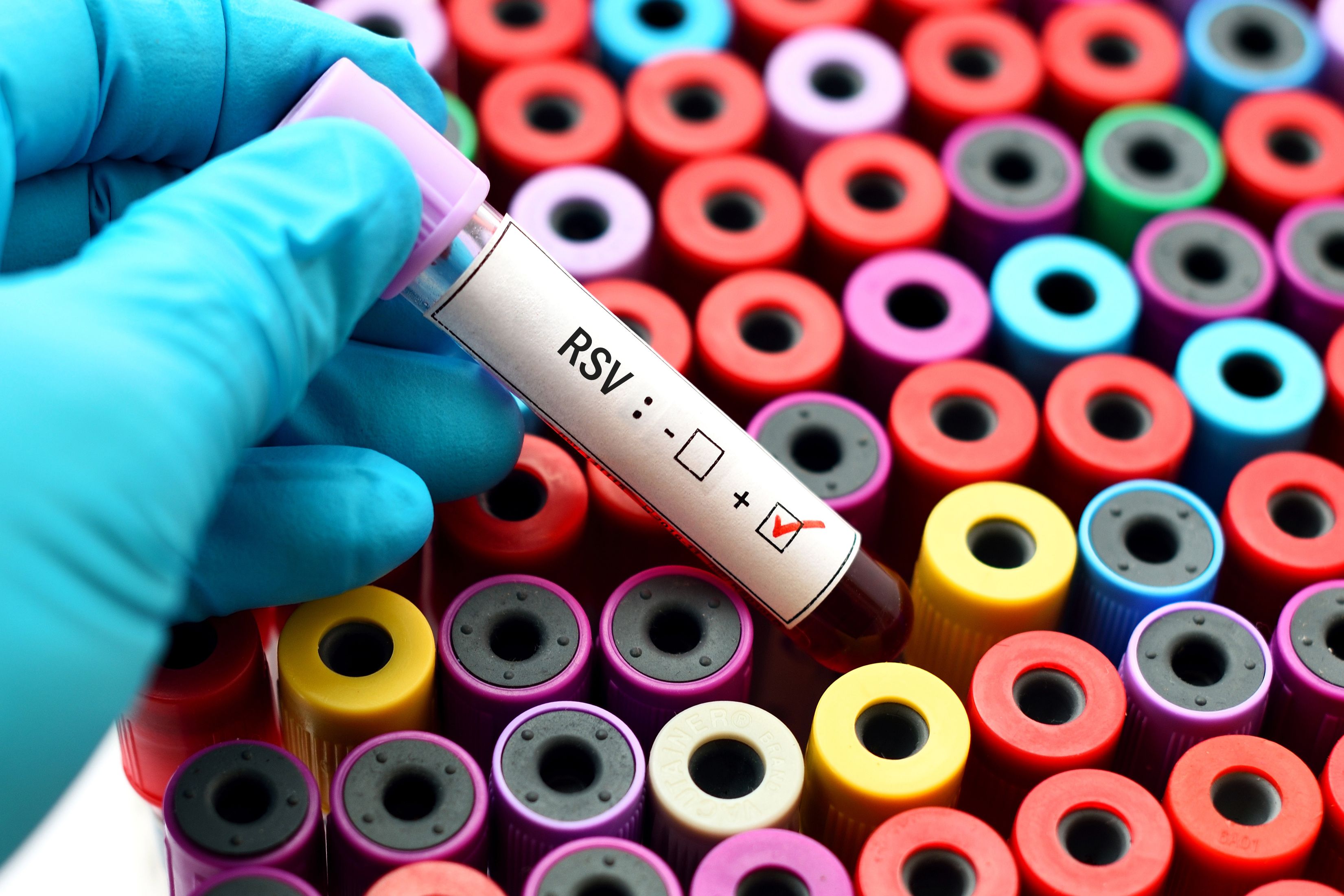Article
Expanded Testing Found to Improve Diagnosis of Respiratory Syncytial Virus
Author(s):
Study finds that a more accurate estimate of the burden of RSV disease will facilitate appropriate decision making regarding the use of preventive interventions, such as vaccination.
Collecting additional specimen types along with real-time polymerase chain reaction (RT–PCR) testing of nasal or nasopharyngeal (NP) swabs was found to improve the diagnosis of respiratory syncytial virus (RSV) by several-fold, according to a study published by Infectious Disease and Therapy. This finding was confirmed even with a relatively low percentage of individuals who had available sputum and serology results, according to the investigators.
Credit: jarun011 - stock.adobe.com

“Although underrecognized, estimated RSV disease burden is comparable to the burden of influenza in older adults, with both viruses contributing to a similar number of symptomatic illnesses, hospitalizations, and death overall, despite substantial variability in the relative burden of the two viruses from year to year,” the study authors wrote.
The study noted that existing published incidence estimates of RSV in adults hospitalized with acute respiratory infection (ARI) were primarily based on RT–PCR testing of NP swabs. However, upper respiratory tract testing results produced via NP swabs in adults may be at odds with positive lower respiratory tract (LRT) testing, according to the investigators.
They noted that this may be a result of reduced viral concentration in the nasopharynx because of sampling conducted in the later stages of the infection when the virus could still be detected at higher concentrations in the LRT; decreased viral concentrations in adult nasal secretions compared to children; and inadequate NP swab samples as a result of dry nasal mucosa and operational reasons.
“The quantification of RSV underestimation associated with sole use of NP swab for diagnosis will allow for adjustment of published RSV incidence rates to estimate the true burden of RSV disease,” the study authors wrote. “These more accurate burden of disease estimates will facilitate appropriate decision making regarding the use of RSV disease preventive interventions, such as vaccination. The objective of this study was to define the underestimation in RSV diagnosis by comparing RSV diagnosis rates with NP swab RT–PCR alone to RSV diagnosis rates with the addition of saliva, sputum, and/or serology testing.”
The researchers conducted the prospective cohort study across 2 different periods, from December 27, 2021, to April 1, 2022, and from August 22, 2022, to November 11, 2022. The study enrolled 1766 patients aged ≥ 40 years and hospitalized for ARI in Louisville, KY.
The NP swab, saliva, and sputum specimens were taken at enrollment and PCR tested via the Luminex ARIES platform. Serology specimens were collected at acute and convalescent timepoints—at enrollment and 30–60-day visits. The RSV detection rate was formulated for the NP swab alone and for the NP swab plus all other specimen type/tests.
Among the patients enrolled in the study, 100% received an NP swab, 99% saliva, 34% sputum, and 21% had paired serology specimens. RSV was diagnosed in 56 (3.2%) patients by NP swab alone, whereas 109 (6.2%) patients were diagnosed via NP swab plus additional specimens, which corresponded to a 1.95 times higher rate [95% confidence interval (CI) 1.62, 2.34].
When researchers capped the comparison to 150 patients from whom all 4 specimen types were collected, they observed a 2.60-fold increase (95% CI 1.31, 5.17) versus NP swab alone (3.3% versus 8.7%). The study showed that sensitivities by specimen type were NP swab 51%, saliva 70%, sputum 72%, and serology 79%.
“In conclusion, our study found that RSV detection increases several-fold with the addition of testing from other specimen types besides NP swab, especially saliva,” the study authors wrote. “Future studies assessing the RSV burden should consider additional testing of saliva, sputum, and serology to adequately detect RSV-positive patients. Burden of disease estimates based solely on NP swab RT–PCR should be adjusted for underestimation, as should metaanalyses of existing RSV incidence estimates.”
Reference
Ramirez, J., Carrico, R., Wilde, A. et al. Diagnosis of Respiratory Syncytial Virus in Adults Substantially Increases When Adding Sputum, Saliva, and Serology Testing to Nasopharyngeal Swab RT–PCR. Infect Dis Ther (2023). https://doi.org/10.1007/s40121-023-00805-1






